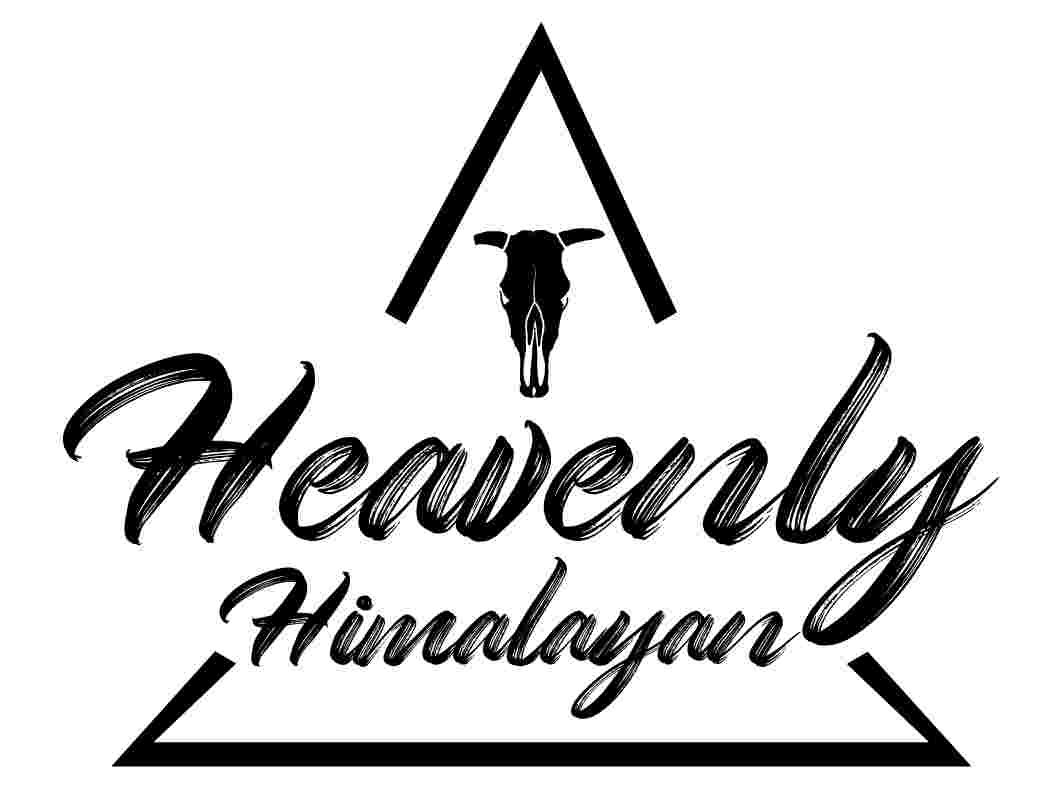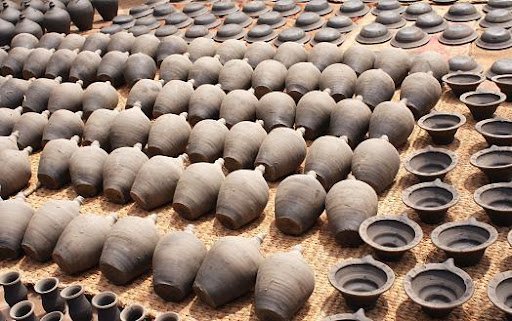Hand-Loomed Headbands from Nepal: The Beauty of Traditional Craftsmanship
Handmade clothing and textiles are pretty impressive. It takes a lot of effort, talent, and attention to detail. It takes years to learn this trade in Nepal. Gathering natural fibers, coloring and spinning them into yarn, and weaving are all steps. For a long time, elders have been imparting this to young people to preserve the Nepali culture, arts, and skills.
This article will explore the Nepali culture of traditional handmade headbands and other natural products unique to the Nepali people; fair trade, stories of women, and how the handcraft fashion business helps to create a better life for these artisans' population and a better world at large.
Kathmandu Handweavers and their Crafts
Handweavers manufacture yarn from natural fibers using a spindle or a spinning wheel. Work is difficult and time-consuming without a spinning wheel. A spinning wheel's wheel does not replace the spindle. Instead, it automates the twisting process, so you don't have to constantly "twist" the thread by hand. Because of the size of the wheel, the degree of twist may be managed more precisely.
The threads are cut into two or more sections and extended horizontally to weave. The warp threads are drawn through, followed by a weft (width-ways thread) over and under them. A shuttle is a wooden tool that transfers the weft thread when weaving fabric. The weft thread can then be moved through the warp threads in the opposite direction.
By repeating this process, you may create a strong, tightly bound material that can be woven into various stunning and colorful designs. Heavenly Himalayan offers a variety of traditional handmade and colorful designs for headbands.
Handmade Nepali Products
Nepal's traditional arts and crafts include metal statues, ethnic clothing, traditional silver jewelry, wood carving, religious and ritual things like bells and vajra, stone sculpture, metal utensils, paubha paintings, pottery, handmade paper, hand knitwear, filigree, and bells.
Since ancient times, Nepalese handicrafts have been noted for their diverse arts, crafts, and oriental architecture. Every one of the one-of-a-kind Nepalese handicrafts demonstrates the skill and artistry of the people who created it. This small-scale, home-based enterprise has been passed down from generation to generation using traditional skills and methods.
Nepal also produces gold, bronze, and brass art icons, filigree products, kitchenware, paintings, thankas, wood carvings, jewelry, leather, silk clothing, masks, and other items. They also handcraft paper and paper products. These products are primarily sold in the United States, the United Kingdom, Germany, France, the Netherlands, Taiwan, Singapore, Japan, Hong Kong, Canada, Italy, and Australia.
Nepal also has goat and buffalo hides, primarily exported in wet blue, tanned, crusted, and chrome finished. Over the past few decades, Nepal has been making and exporting a wide range of leather goods with both traditional and modern designs. Nepal makes a lot of leather goods, like jackets, handbags, belts, purses, shoes, gloves, and wallets, which have a significant market outside of Nepal.
Handmade Headbands and Nepalese Culture
Textile production in Nepal dates back to roughly 3,000 BCE. People learned how to spin and dye yarn, as well as complicated weave patterns like Dhaka, as the industry flourished. This trade had been going on for almost 2,000 years before the Silk Road.
Because they know how to do exquisite hand waving, combine well with accessories, and have a lot of expertise in Nepal, the women loom are masters of the craft. You can get all kinds of hand-loomed headbands; from stunning fabrics, block-printed dinosaur motifs, and small cotton.
Other handcrafted Nepali products include hemp stripe Himalayan backpacks, Nepali backpacks, Nepali items, hippie backpacks, free-spirit style, hiking backpacks, hats, ceremonial beads, prayer beads, festival backpacks, gift headbands, eco-friendly and recycled fabric to fair-trade bags.
Fair Trade Nepal
If you want to buy fair trade and ethical goods, visit local women's crafts. Products with a backstory and gifts that are both beautiful and meaningful. An excellent workshop where women make things is well worth a visit. They feature courses where you may learn how to produce various crafts and a culinary lesson for those who wish to make authentic Nepali food.
FTG Nepal is a coalition of 17 fair trade organizations that work together to assist struggling producers. Its objectives are to "encourage constructive cooperation among fair trade organizations," "convince policymakers to adopt fair trade-friendly policies," and "promote fair trade practices in Nepal."
FTG Nepal also aims to develop its members' abilities and help them make the most of the resources they already have. FTG Nepal provides a place for its members to discuss common issues and exchange information and ideas. Members provide business, financial, design, education, and marketing assistance to over 35,000 producers, most of whom are women.
Stories from Crafts-Women
Approximately 60 weavers in Kirtipur and 137 producers in Pokhara shared their stories through a guided process, some of which have been written down. Many women in these groups rely entirely or primarily on their craft labor for a living. They discussed what the organization means to them and how it has assisted them in making money.
For example, the Kirtipur leader provides raw materials and patterns to the weavers while negotiating a fixed wage with the ACP production manager. She not only delivers finished items to ACP and pays the weavers, but she also maintains quality control.
In addition to the numerous benefits of ACP, the women in the organization report that joining has helped them get money on time and regularly.
The weavers say they utilize their money to become more self-sufficient, care for their families, and send their children to school. During the weavers' discussions, an unexpected pattern emerged: those with adoring families and husbands made more money.
Fair Trade Challenges
Despite the government's promises to increase gender equality and inclusion, domestic abuse, trafficking of young women, and husbands abandoning their families remain widespread. When a firm begins to make money, husbands frequently take charge or take the money. Microcredit programs have provided funds to women, and some have assisted them in starting small companies.
Crafting an Economic Way-Out
We can keep the looms spinning by assisting those who do not have much money. These beautiful objects and antiques are created using talents preserved, passed down, and preserved. It is critical to keep Nepal's cultural history in a meaningful way.
"Art and crafts assist in preserving our culture and history, which we are proud of."
Heavenly Himalayan is poised to support and empower local women. Heavenly Himalayan has witnessed firsthand how these traditional talents have improved the lives of poor producers, primarily women.
The Beauty of Traditional Craftsmanship
Experienced and dedicated Nepalese women handcrafted the merino wool headband. While living among some of the world's highest snow-capped peaks, each hat takes hours to manufacture by hand with love and attention to detail. Merino wool can keep you warm, dry, and comfortable no matter where you go. Because its strands are so soft and thin, it does not itch like other perfect varieties of wool.
It keeps you dry and comfy while allowing you to breathe freely. This perfect merino wool is naturally water and snow-resistant, and its lanolin fights bacteria. Merino wool is a wonder fiber that you'll wonder how you ever survived without, whether you're on the slopes, trekking a snowy trail, cheering at the stadium, or cuddling by a fire.
This silky, unique hand-knit Merino wool headband will keep your ears warm when you don't want to wear a cool hat. It's thickly made from soft Merino yarns, lined with color-coordinated polar fleece for added perfect warmth, and finished with a lovely knit flower for a bit of country charm!
Rocking Nepali Headbands
Heavenly Himalayan offers a vast collection of quality hand-loomed headbands of different designs and colors, including black, grey, white, and many other richer cultural and unique color combinations throughout Kathmandu made by native artisans and women in Nepal.
These Nepali headband products could line a smile across your face and not just warm your body up. Join the long list of customers worldwide shopping for these beautiful products and handicrafts.
These headbands, a terrific alternative to caps, which tend to mess up your hairstyle, is one of the most incredible things to keep you warm. They draw attention to your face and hair like a piece of jewelry. A headband, like a beanie, almost wholly encircles your head but is lighter in style; it keeps you warm.
In addition to keeping you warm, these accessories draw attention to your face by holding your hair back. These Ear warmers and headbands are both fashionable and functional. With any of these items, you can protect your ears and head from the cold while keeping your hair in good condition. Wearing a headband will make you feel cool and, of course, warm (pun intended).
Conclusion
The Nepali craftswoman weaves gorgeous headbands to make a living and preserve her culture. As previously said, looms are kept from going quiet by supporting fair trade and assisting lesser-known artisans. These beautiful objects and antiques are created using talents preserved, passed down, and preserved. It is critical to keep Nepal's cultural history in a meaningful way.








